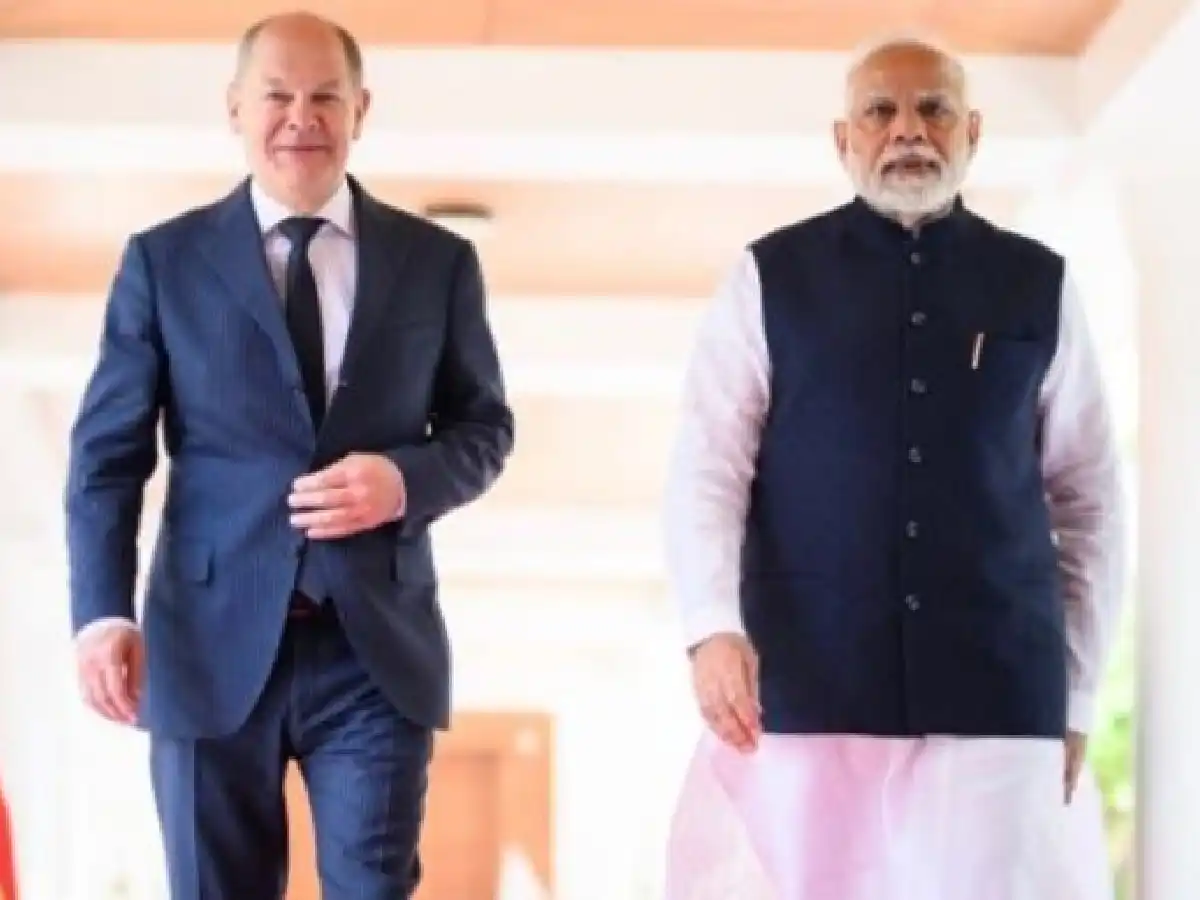German Chancellor Olaf Scholz has embarked on a 3-day trip to India, reaching Delhi late Thursday for the 7th IGC (Intergovernmental Consultations). This marks his third trip to India within the past 2 years. He visited India twice in the previous year, once for a bilateral visit in February 2023 and again in September for the G20 conference hosted by India.
India and Germany have had diplomatic ties for close to 70 years. India was among the earliest nations to form diplomatic ties with Germany following the end of the Second World War. The strong alliance between the two nations started in May 2000 and was further solidified with the introduction of ‘Intergovernmental Consultations’ in 2011. Germany has a set dialogue mechanism with only a few countries, and India is one of them.
India and Germany have been involved in diplomatic ties for 70 years. The two nations established a robust strategic and trade partnership in 2003.
The visit of German Chancellor Olaf Scholz to India will mark the start of a new phase in the relations between the two countries. Prime Minister Modi made a trip to Germany from June 26th to June 28th, 2022. He took part in the sixth ‘Intergovernmental Consultations’ in Berlin and also attended the G7 summit led by Germany’s Chancellor. In addition, PM Narendra Modi conducted discussions with the German Chancellor during the G20 summit in Bali in November 2022.
In terms of trade connections, Germany ranked as the twelfth largest trading partner for India in the year 2022-23. In this period, India accounted for one percent of Germany’s overall foreign trade. Germany accounted for 2.24 percent of India’s overall foreign trade concurrently. Prior to the Corona outbreak, the two countries had achieved all-time high levels of bilateral trade. In the fiscal year 2018-19, India and Germany achieved a milestone with a trade worth $24 billion. Despite the Corona epidemic, the two countries saw a rise in bilateral trade, reaching $26 billion in 2022-23.
Germany is currently experiencing a period of economic downturn. In order to address this issue, it requires the backing of a rapidly expanding economy such as India. India has become a significant ally for Germany in the Asia-Pacific area, providing assistance for both economic growth and regional security.
Germany is seeking a substitute for China. Consequently, German Chancellor Olaf Scholz’s visit to India is seen as an effort to enhance ties and explore an alternative to China. In reality, Germany has its own worries about regional tensions involving the South China Sea, Taiwan, and the Philippines. There is no strategic partner better than India for stability in the Asia-Pacific region in this situation.
Currently, China is Germany’s biggest trading partner within the European Union, but ongoing trade tensions with China are a concern for Germany. In 2022, German direct investment in India amounted to approximately 2600 crores, which was significantly higher than the 20% German investment in 2015. Germany is optimistic that by the end of the decade, they can achieve a percentage of at least 40. If Germany relies too much on China, it could face a major crisis like in 2022 when Ukraine was harmed by war due to its dependence on gas from Russia.
Germany recently proposed a roadmap for enhancing bilateral cooperation with India in various sectors through the ‘Focus on India’ initiative. Their aim is to reinforce their presence in India’s expansive market through concentrating on it and lessen reliance on China.
There is a belief that Germany will boost its manufacturing sector in India, with 51% of German companies planning to increase their investments within the next year. It is anticipated that German firms will invest approximately 4.5 lakh crores in India over the following 6 years. If this occurs, it will increase twofold in comparison to the existing investment.

